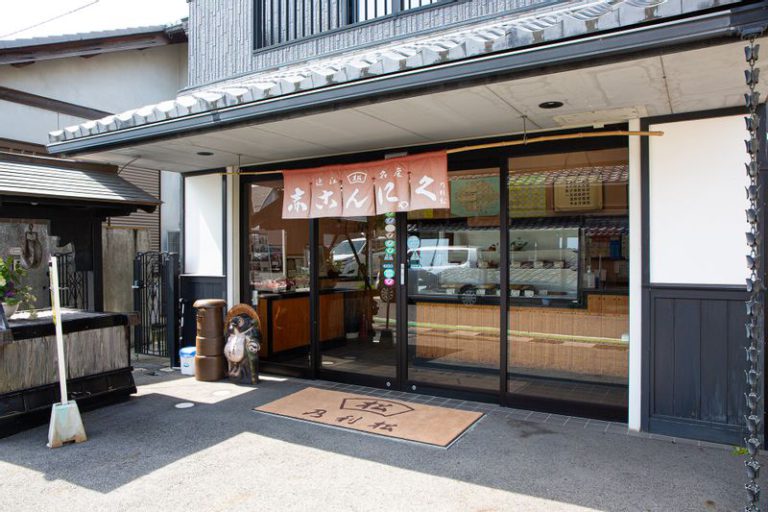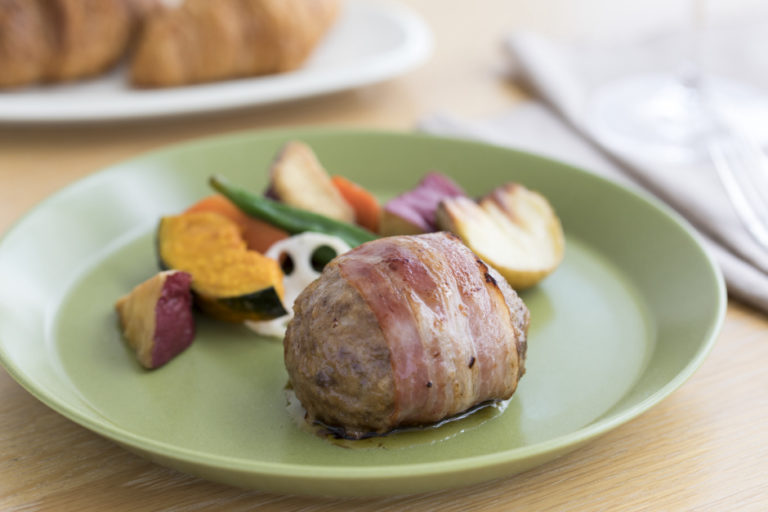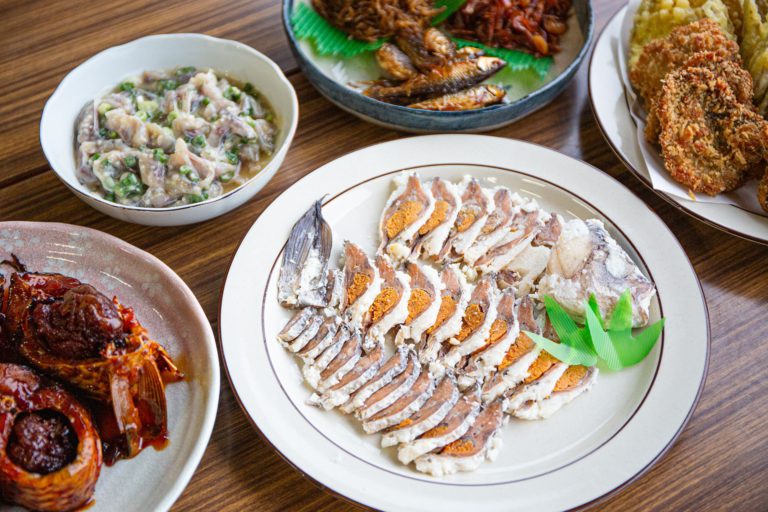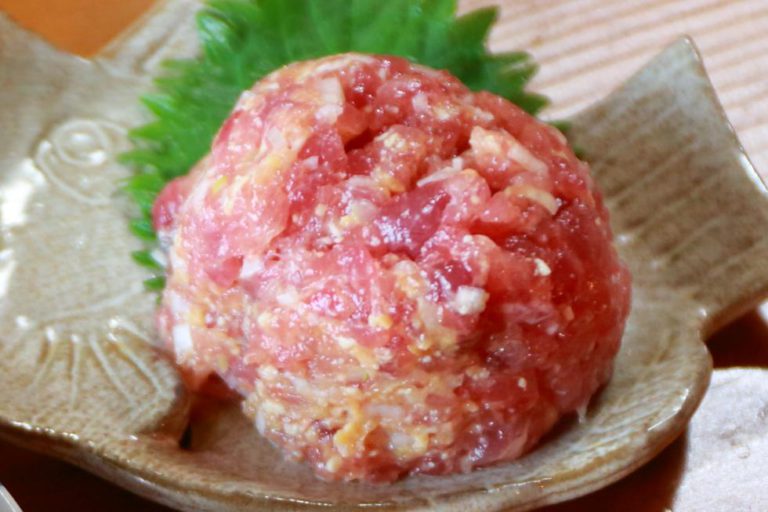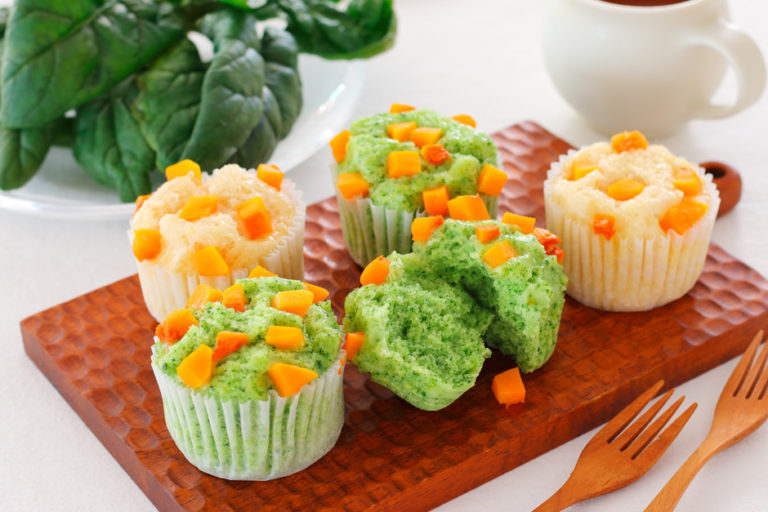Aka Konnyaku: A Specialty of Omi Hachiman That Can Be Enjoyed on Both Special Occasions and Ordinary Days
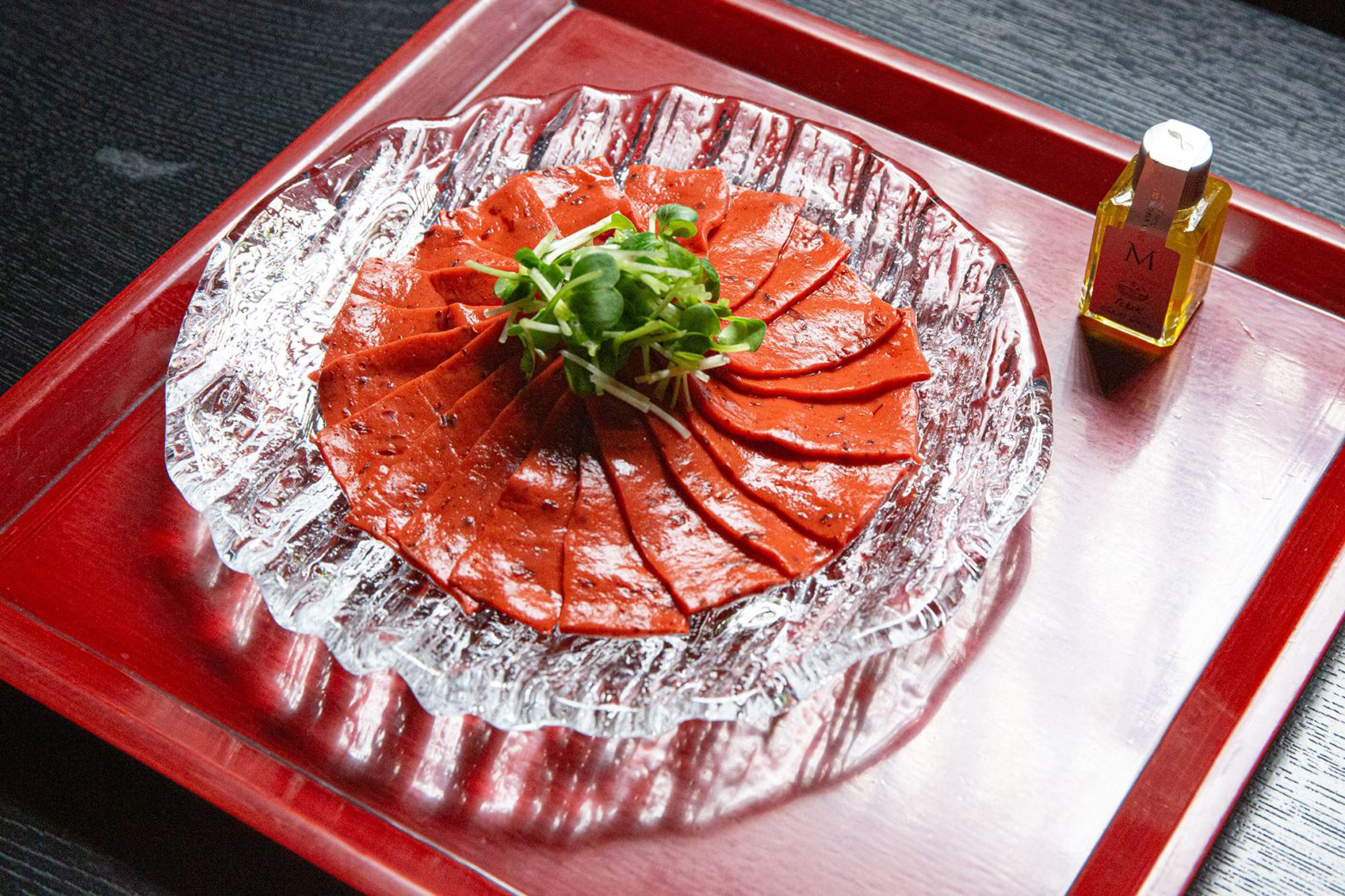
Is red the result of winning a konjac competition?
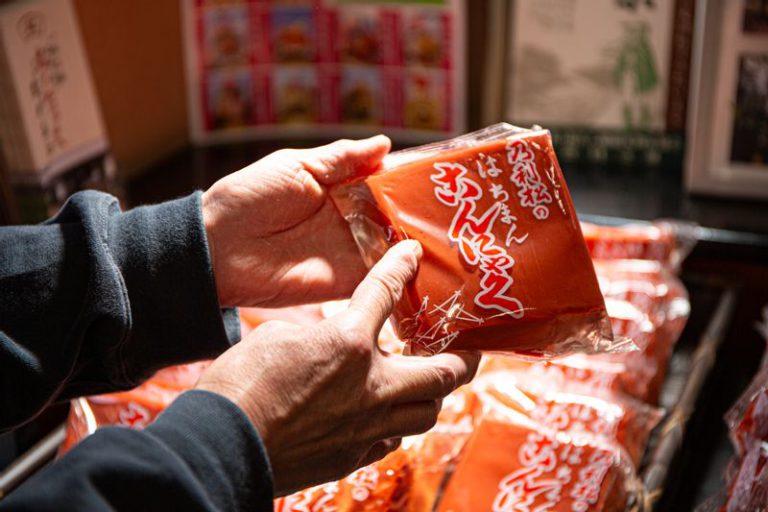
Aka Konnyaku has a vivid and gorgeous shade of red, similar to that of a red brick. There are different theories about the origin of the red color of konjac jellies. Many people believe that the red dye was used to please Nobunaga Oda’s love for flamboyance. Others speculate that the color was inspired by the red costumes worn during the local Sagyocho festival. After researching the history of Hachiman, a representative from Norimatsu Shokuhin discovered a new and most probable theory.
Miki Yoshii, the wife of the company president’s son, explained: “The legend indicates that during the dawn of the Meiji period (1868-1912), the towns of Hachiman and Seta in Otsu held a competition to make konjac jelly. When Hachiman emerged victorious, the Omi merchants suggested dyeing it red to give it a distinguishing appearance.” Incidentally, the town’s historical records reveal that Norimatsu Shoten was founded in 1836, contrary to the previous claim of 1891.
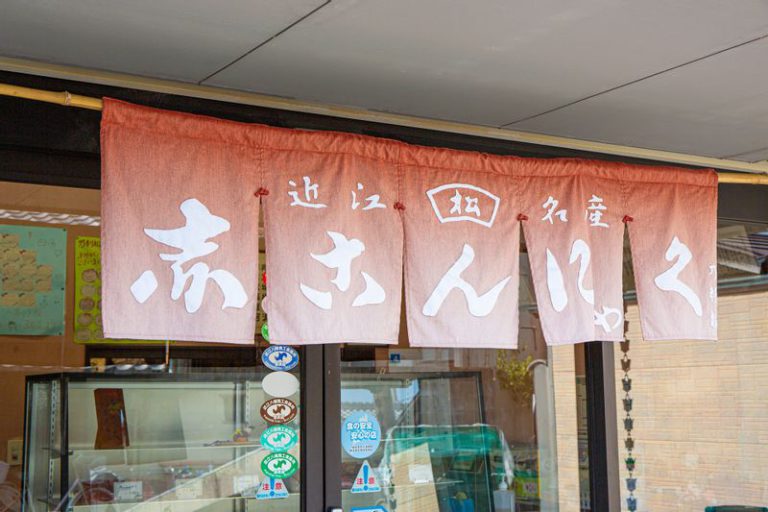
Regardless of its origin, Aka Konnyaku has been handed down without interruption in Omi Hachiman. Norimatsu Shokuhin is the only surviving manufacturer in the city, and it handles all aspects of production. Over half a century ago, there were roughly 20 konjac jelly shops. However, due to the labor-intensive production process and the lack of successors, the shops gradually went out of business. Nonetheless, the konjac jelly section of supermarkets is still bright red, and the product is locally known as “Akakon.” Some locals believe that konjac jelly is red because it is eaten during special occasions, such as weddings, funerals, and New Year’s celebrations, as well as on regular days in oden and stews.
Aka Konnyaku tastes delicious because it is made by hand
Making Aka Konnyaku is physically challenging, but Norimatsu Shokuhin preserves the traditional taste through its manual process.
First, konjac powder is mixed with hot water over 50°C. Iron sesquioxide, the source of the red color, is added and kneaded in a machine called a “batter kneader,” a square box with beaters installed inside. Although the use of batter kneading machines has decreased today, they are still known for producing konjac jelly with the perfect amount of air bubbles, which allows it to soak up the flavor. After the mixture turns into a red paste, it is poured into a stainless-steel tray and left to soak in hot water (80°C) overnight. This additional step is crucial in removing any harshness during the soaking process, resulting in firmer Aka Konnyaku.
Yoshii explains, “Konjac is a heavy substance, similar to water. Our representative insists on human intervention where it counts, even though the entire process could be automated.”
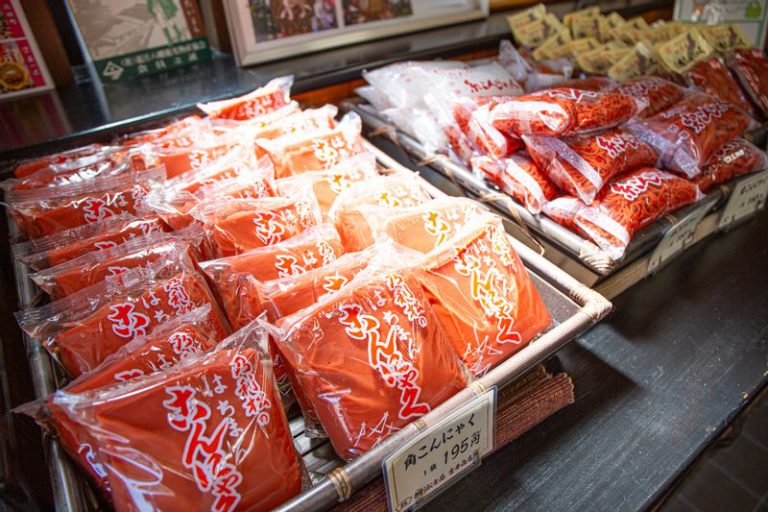
The company’s shop in Omi Hachiman castle town sells Aka Konnyaku in various shapes. The company’s most popular item is the Hachiman Aka Konnyaku, which is available as a whole block. In addition, the company offers konjac noodles, Tsuki Konnyaku (konjac jelly strands produced by squeezing the block out of a noodle cutter) as well as red and white konjac jelly. This makes it fun to choose the right one for your dish. We were informed that the company was also emphasizing the necessity of educating people about food, and we noticed some wall messages from children who had visited the factory.
Yoshii comments, “Every year, primary school children visit the factory for a tour, and middle school students come here for work experience. We supply our products for school lunches to areas across Kansai, not just Shiga. Even when they become adults, they remember how much they enjoyed our konjac jellies back when they were kids, and it’s a delight to see them when they come into our shop.”
Savoring Aka Konnyaku in new ways
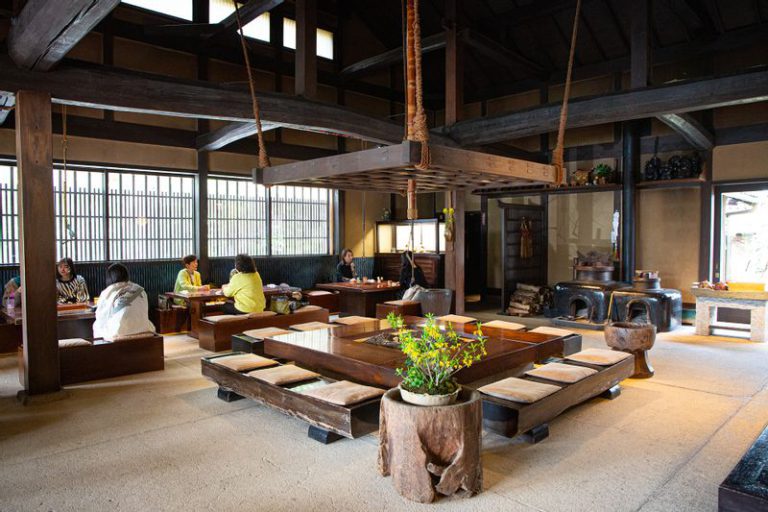
Taneya Himure-no-ya, located on the grounds of Himure Hachimangu Shrine near the Norimatsu Shokuhin Yoshii Shoten shop, is renowned for its set meals made with Norimatsu Shokuhin’s Aka Konnyaku and with sashimi of Aka Konnyaku. The teahouse has a grand machiya townhouse structure, tastefully decorated in traditional Japanese style.
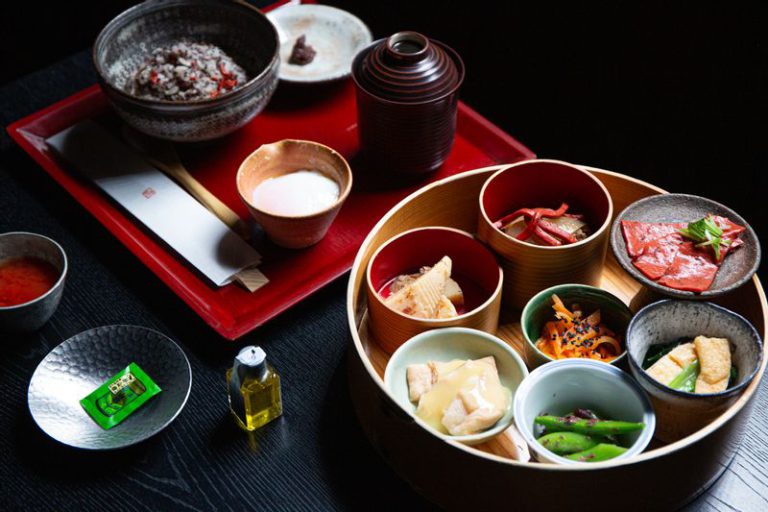
Taneyazen Meal includes a stew of Aka Konnyaku and Omi beef, along with colorful okowa rice made with finely chopped Aka Konnyaku. Aka Konnyaku sashimi is a new and exciting dish made by cooking Aka Konnyaku in dashi, thinly slicing it, and serving it with a drizzle of olive oil. The combination of the chewy texture of Aka Konnyaku, the savory flavor of dashi, and the fragrant aroma of olive oil creates a surprising and delightful culinary experience.
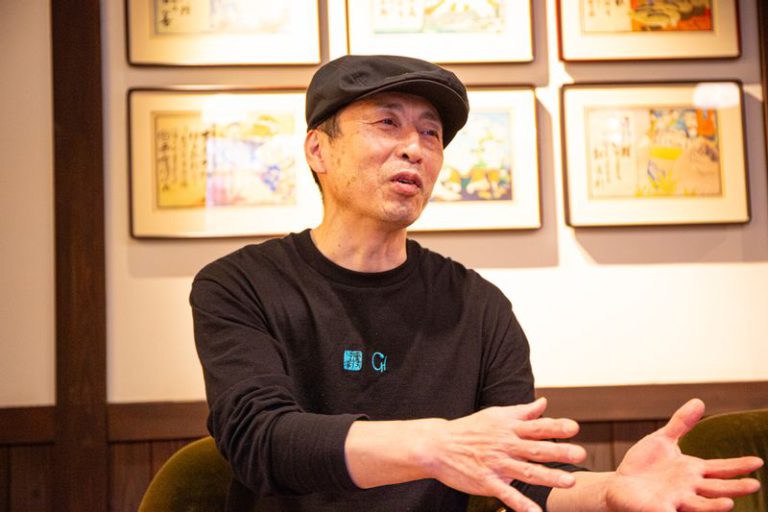
The restaurant’s deputy manager, Akira Murata, commented that they use Aka Konnyaku, which contains adzuki skin under a special arrangement. “Since we operate a wagashi shop, we requested Norimatsu to use the adzuki skin left over from producing silken adzuki jam. The resulting konjac jelly has a unique texture, don’t you think?” According to Murata, Aka Konnyaku goes well with beef in dishes like sukiyaki and stews. Yoshii from Norimatsu Shokuhin also mentioned that she often serves Aka Konnyaku wrapped in beef to treat her guests.
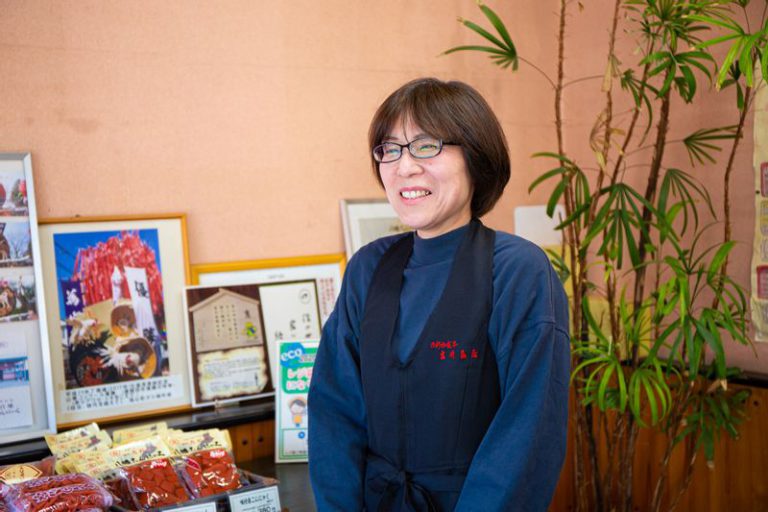
Yoshii expressed her hope that people across Japan would try Aka Konnyaku as it is not widely known. She is uncertain how long their business will continue, but she intends to keep producing the delicious Aka Konnyaku of Hachiman as long as possible.
If you ever visit Omi Hachiman, be sure to try Aka Konnyaku. We are sure you will enjoy it!

